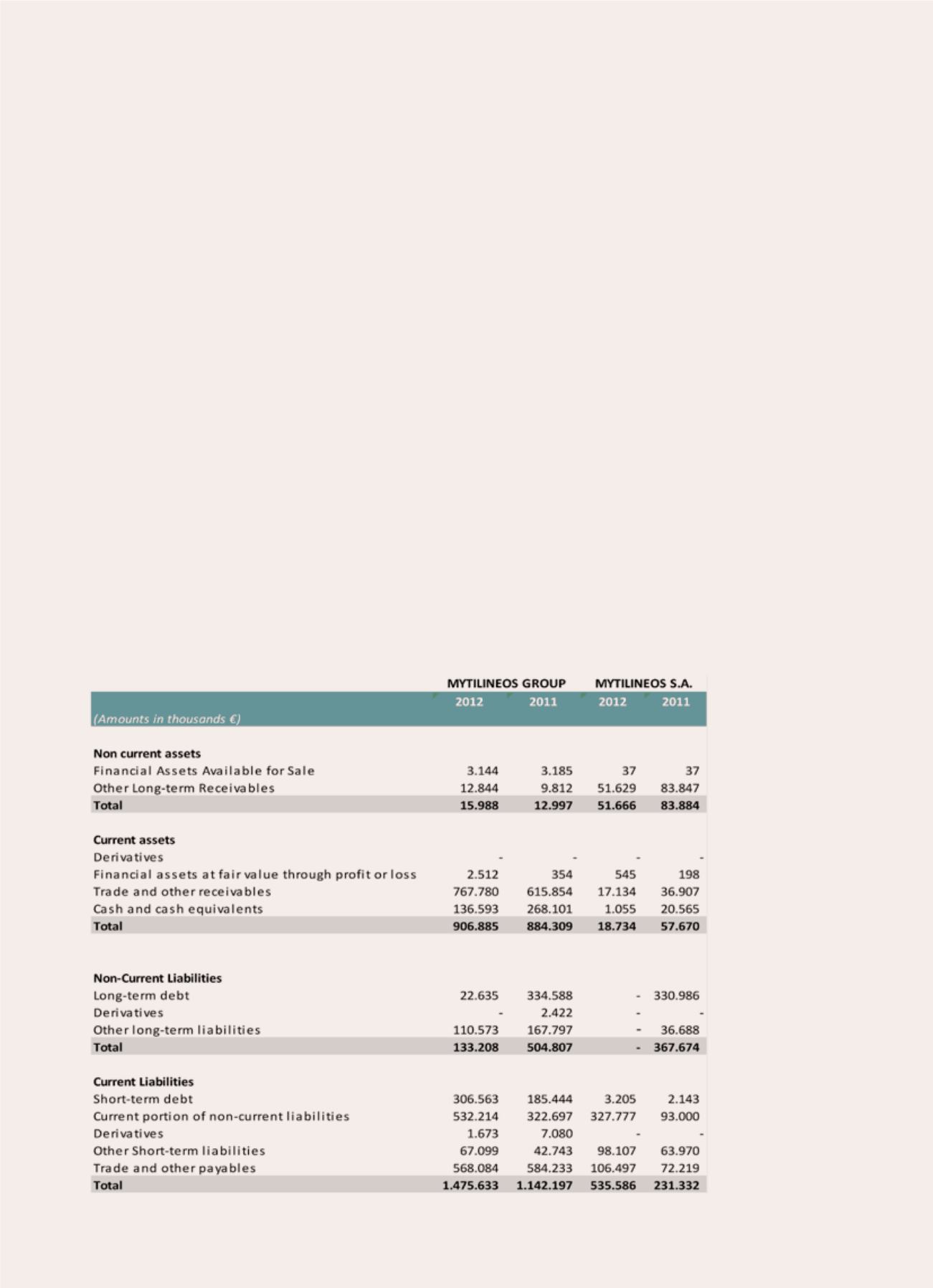
Annual Financial Report for the period from 1st of January to the 31st of December 2012
91
4. Business Risk Management
4.1 Financial Risk Factors
The Group’s activities expose it to a variety of financial risks: market risk (including foreign exchange risk
and price risk), credit risk, liquidity risk, cash flow risk and fair value interest-rate risk. The Group’s overall
risk management program focuses on the unpredictability of commodity and financial markets and seeks to
minimize potential adverse effects on the Group’s financial performance. The Group uses derivative financial
instruments to hedge the exposure to certain financial risks.
Risk management is carried out by a central treasury department (Group Treasury) under policies approved
by the Board of Directors. Group Treasury operates as a cost and service centre and provides services to all
business units within the Group, co-ordinates access to both domestic and international financial markets
and manages the financial risks relating to the Group’s operations. This includes identifying, evaluating and
if necessary, hedging financial risks in close co-operation with the various business units within the Group.
4.2 Financial Instruments
The Group’s financial instruments consist mainly of deposits with banks, bank overdrafts, FX spot and for-
wards, trade accounts receivable and payable, loans to and from subsidiaries, associates, joint ventures, in-
vestments in bonds, dividends payable and lease obligations.
The financial instruments presented in the financial statements are categorized in the tables below:


